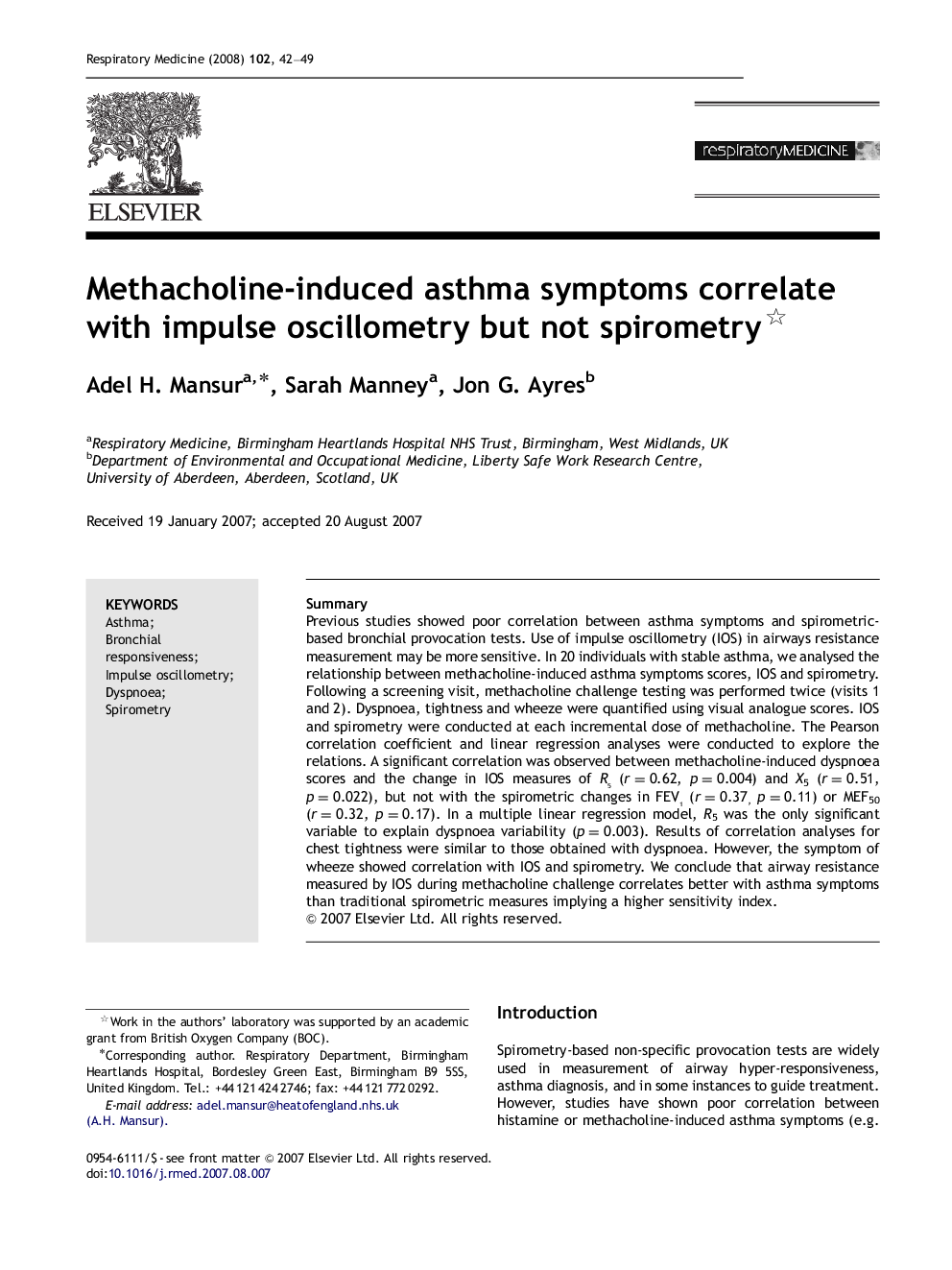| Article ID | Journal | Published Year | Pages | File Type |
|---|---|---|---|---|
| 4211404 | Respiratory Medicine | 2008 | 8 Pages |
SummaryPrevious studies showed poor correlation between asthma symptoms and spirometric-based bronchial provocation tests. Use of impulse oscillometry (IOS) in airways resistance measurement may be more sensitive. In 20 individuals with stable asthma, we analysed the relationship between methacholine-induced asthma symptoms scores, IOS and spirometry. Following a screening visit, methacholine challenge testing was performed twice (visits 1 and 2). Dyspnoea, tightness and wheeze were quantified using visual analogue scores. IOS and spirometry were conducted at each incremental dose of methacholine. The Pearson correlation coefficient and linear regression analyses were conducted to explore the relations. A significant correlation was observed between methacholine-induced dyspnoea scores and the change in IOS measures of R5 (r=0.62, p=0.004) and X5 (r=0.51, p=0.022), but not with the spirometric changes in FEV1 (r=0.37,p=0.11) or MEF50 (r=0.32, p=0.17). In a multiple linear regression model, R5 was the only significant variable to explain dyspnoea variability (p=0.003). Results of correlation analyses for chest tightness were similar to those obtained with dyspnoea. However, the symptom of wheeze showed correlation with IOS and spirometry. We conclude that airway resistance measured by IOS during methacholine challenge correlates better with asthma symptoms than traditional spirometric measures implying a higher sensitivity index.
